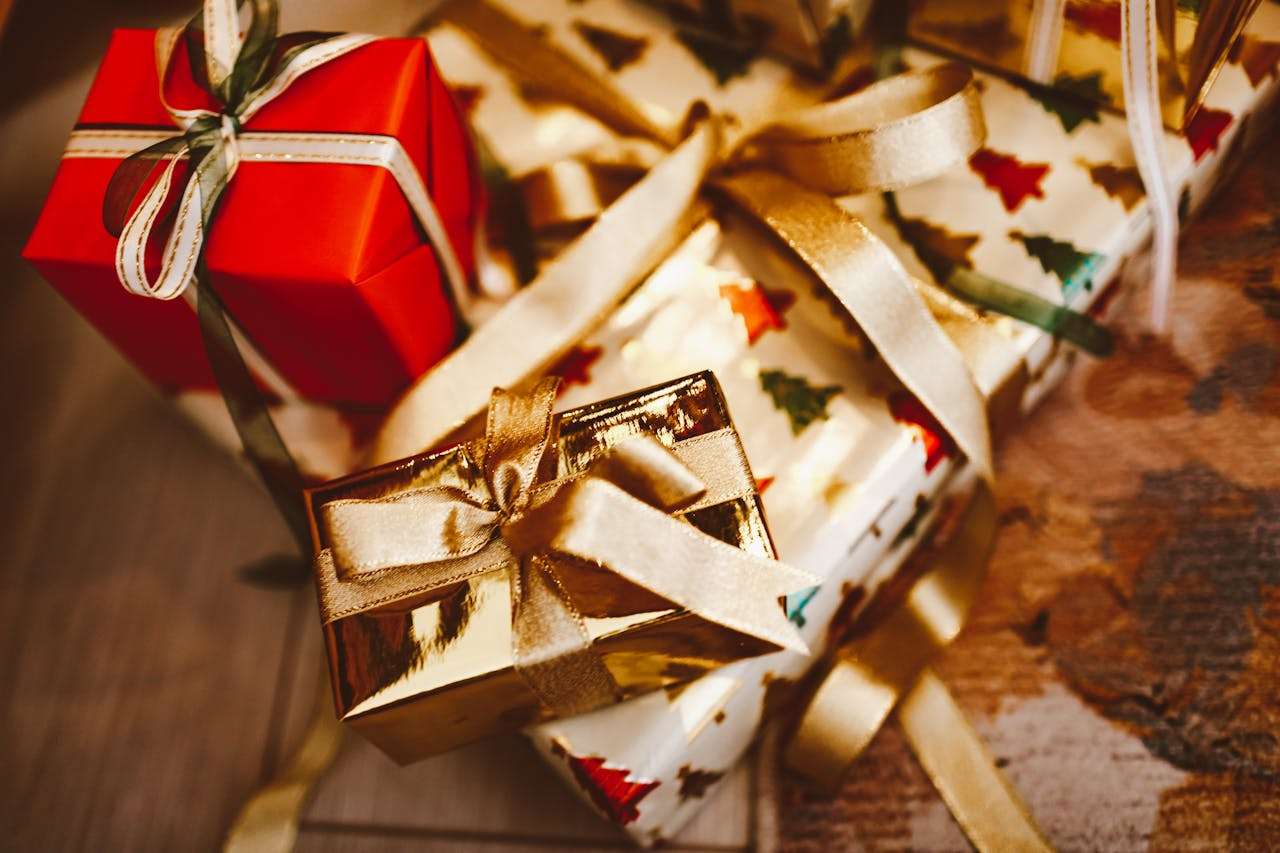1. 春节:中国最重要的传统节日
Spring Festival, also known as Chinese New Year, is the most important traditional festival in China. It usually falls in late January or early February according to the lunar calendar. Before the festival, families clean their houses to sweep away bad luck and decorate doors with red couplets for good fortune. On New Year's Eve, relatives gather for a big dinner, often featuring dumplings, which symbolize wealth. Children receive red envelopes with money inside, and fireworks light up the sky at midnight. The festival lasts for 15 days, ending with the Lantern Festival.
🍀中文翻译:
春节,也被称为中国农历新年,是中国最重要的传统节日。它通常在农历一月底或二月初举行。节前,家家户户会打扫房屋,以扫除厄运,并在门上贴上红色对联以求好运。除夕夜,亲人们会聚在一起吃年夜饭,通常会吃饺子,象征财富。孩子们会收到装有钱的红包,午夜时分,烟花照亮夜空。春节持续15天,以元宵节结束。
✍️点评与重点:
本文使用了高中阶段常见的词汇,如 "traditional festival", "according to", "symbolize" 等。
📍划重点:注意文化象征词汇,如 "red envelopes"(红包)代表祝福,"dumplings symbolize wealth"(饺子象征财富)是文化点睛之笔,适合在写作中引用。
2. 中秋节:团圆与月亮的节日
The Mid-Autumn Festival is celebrated on the 15th day of the 8th lunar month, when the moon is fullest and brightest. It is a time for family reunion, much like Thanksgiving in the West. People eat mooncakes, which are round pastries filled with sweet or salty fillings, symbolizing completeness and togetherness. Families often gather outdoors to admire the moon while sharing stories and tea. In some places, lanterns are lit and children carry them around happily. The festival reflects the Chinese value of family harmony.
🍀中文翻译:
中秋节在农历八月十五日庆祝,此时月亮最圆最亮。这是一个家人团聚的节日,很像西方的感恩节。人们会吃月饼,这是一种圆形的糕点,内馅有甜有咸,象征圆满和团圆。家人常聚在户外赏月,一边喝茶一边分享故事。在一些地方,人们会点亮灯笼,孩子们快乐地提着灯笼玩耍。这个节日体现了中国人重视家庭和谐的价值观。
✍️点评与重点:
文章结构清晰,使用了对比手法("much like Thanksgiving")帮助西方读者理解。
📍划重点:"symbolizing completeness and togetherness" 是高级表达,适合用于说明文化象征;"reflects the value of..." 是写作中常用的总结句型。
3. 圣诞节:全球欢庆的节日
Christmas is celebrated on December 25th every year to honor the birth of Jesus Christ. Although it is a religious holiday, many people around the world enjoy it as a cultural event. Families decorate Christmas trees with lights and ornaments, and children believe that Santa Claus brings gifts at night. People exchange cards and presents, sing carols, and share meals with loved ones. In many countries, red and green are the traditional colors, and snowmen and reindeer are common symbols. Christmas is a time of joy, giving, and peace.
🍀中文翻译:
圣诞节每年12月25日举行,以纪念耶稣基督的诞生。虽然这是一个宗教节日,但世界各地的许多人也将其作为文化活动来庆祝。家人会用彩灯和装饰品装饰圣诞树,孩子们相信圣诞老人会在夜里送礼物。人们互赠卡片和礼物,唱颂歌,并与亲人共进餐食。在许多国家,红色和绿色是传统颜色,雪人和驯鹿是常见的象征。圣诞节是欢乐、给予与和平的时刻。
✍️点评与重点:
语言简洁明了,适合高中生模仿。
📍划重点:"honor the birth of..."(纪念……的诞生)是正式表达;"is celebrated to..." 被动语态结构常用于说明节日目的。

4. 感恩节:表达感激的时刻
Thanksgiving is a major holiday in the United States and Canada, celebrated in November and October respectively. It began as a harvest festival where people gave thanks for the food they had gathered. Today, families come together to enjoy a traditional meal, usually including turkey, mashed potatoes, and pumpkin pie. Before eating, many people take turns sharing what they are grateful for. It is also a time for watching parades and football games. The spirit of Thanksgiving is about appreciation, family, and kindness.
🍀中文翻译:
感恩节是美国和加拿大的重要节日,分别在11月和10月庆祝。它起源于丰收节,人们感谢所收获的食物。如今,家人团聚享用传统餐食,通常包括火鸡、土豆泥和南瓜派。吃饭前,许多人会轮流分享自己感激的事情。这也是观看游行和橄榄球比赛的时刻。感恩节的精神在于感恩、家庭和善意。
✍️点评与重点:
使用了时间状语从句和并列结构,增强语言丰富性。
📍划重点:"gave thanks for..." 和 "grateful for..." 是表达感谢的常用搭配;"the spirit of..." 可用于总结节日内涵,是高分句型。
5. 万圣节:趣味与惊悚并存的节日
Halloween is celebrated on October 31st, especially in Western countries. It started from an ancient Celtic festival called Samhain, when people believed that spirits could visit the world of the living. Today, it has become a fun event for children and adults alike. Kids dress up in costumes—like witches, ghosts, or superheroes—and go door-to-door saying "Trick or treat" to get candy. Houses are decorated with pumpkins, spider webs, and scary figures. Some people also attend parties or watch horror movies. Halloween is a unique mix of fear and fun.
🍀中文翻译:
万圣节在10月31日庆祝,尤其在西方国家流行。它起源于一个叫萨温节的古老凯尔特节日,人们相信那时亡灵可以来到人间。如今,它已成为儿童和成人都喜爱的趣味活动。孩子们穿上女巫、幽灵或超级英雄的服装,挨家挨户说“不给糖就捣蛋”来索要糖果。房屋会用南瓜、蜘蛛网和恐怖形象装饰。有些人还会参加派对或观看恐怖电影。万圣节是恐惧与乐趣的独特结合。
✍️点评与重点:
介绍了节日的历史起源和现代习俗,信息全面。
📍划重点:"started from..." 和 "has become..." 展现节日演变;"a mix of fear and fun" 是生动的总结表达,适合用于结尾句。
6. 端午节:纪念与传统的融合
The Dragon Boat Festival, also known as Duanwu Festival, is held on the 5th day of the 5th lunar month. It honors Qu Yuan, a patriotic poet from ancient China who drowned himself in a river after his kingdom was defeated. To prevent fish from eating his body, people threw rice wrapped in bamboo leaves into the water—this later became zongzi. Today, the festival includes dragon boat races, eating zongzi, and hanging herbs on doors for health. It is a powerful reminder of loyalty, history, and cultural pride.
🍀中文翻译:
端午节,又称端五节,在农历五月初五举行。它纪念中国古代爱国诗人屈原,他在国家被灭后投江自尽。为了防止鱼吃掉他的身体,人们将用竹叶包裹的米饭投入江中——这后来演变为粽子。如今,节日包括赛龙舟、吃粽子和在门上挂草药以求健康。它强烈提醒人们忠诚、历史和文化自豪感。
✍️点评与重点:
包含历史背景和文化习俗,内容有深度。
📍划重点:"honors..." 表达纪念意义;"this later became..." 说明习俗演变过程;结尾句 "a reminder of..." 是升华主题的写作技巧。
👉 关注 水滴英语作文网,轻松写好高中英语作文!